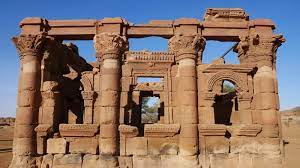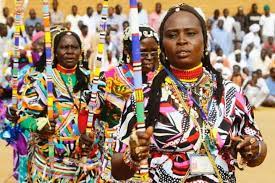This post list the cultural Heritage site of Sudan and the proposed sites for inclusion and further describes the properties inscribed in the heritage list.
GENERAL LIST OF SUDANESE CULTURAL HERITAGE PROPERTIES INSCRIBED ON THE HERITAGE LIST
1. Jebel Barkal and the sites of the Napatan Region
2. Monuments and sites of the Island of Meroe
Cultural sites proposed for inclusion to the Heritage
1. Monuments of the Kingdom of Kerma
2. Monuments and sites of Sai Island
3. Ancient Egyptian pharaonic sites
4. Monuments of the medieval Christian Kingdoms of Nubia
5. Islamic Monuments of al-Khandaq and Wad Nimeiri
6. The port of Suakin
7. Monuments of Greater Khartoum.

DESCRIPTION OF PROPERTIES INSCRIBED ON THE HERITAGE LIST
JEBEL BARKAL AND THE MONUMENTS OF THE NAPATAN REGION
Jebel Barkal and the monuments of the Napatan region are situated about 325km north of Khartoum in Northern State, Sudan in the region of Karima. They were inscribed on the Heritage List in 2003 and include the monuments of Jebel Barkal, El-Kurru, Nuri, Sanam and Zuma.
Jebel Barkal
The area of Jebel Barkal comprises the site of the ancient city of Napata whose ruins are scattered around it. Napata was the primary sanctuary and coronation centre of the Kushite kingdom. Jebel Barkal was known as the ‘Pure Mountain’ and was the southern residence of the god Amun, an Egyptian state god and the Kushite god of kingship. The site is best known for its Kushite architecture and monuments, and for over a thousand years, Jebel Barkal was the chief cult centre of the Kingdom of Kush.1 It was of great religious and political importance particularly between the 9 th century and 4th century BC.
El-Kurru
El-Kurru is located south of Jebel Barkal, 20km south of modern Kareima. It is the northernmost of the early Kushite royal burial grounds containing over 20 royal burials. The earliest known are ancestral tombs that predate the Kushite kingdom. Through time, the tomb structures developed from simple mounds with rounded enclosure walls to rectangular tomb structures with rectangular walls and small mortuary chapels. Some of the later tombs were covered with pyramids and belong to the rulers Piankhy (747-716 BC), Shabaqo (716-702 BC), and Tanwetamani (664-653 BC). Their burial chambers were dug deeply in the sandstone substratum and accessed by stairways.
Nuri
Nuri is a pyramid cemetery site located on the right bank of the Nile c. 10km north of modern Merowe. It contains more than 60 pyramids made for Kushite kings and queens, and remains of several mortuary chapels. The pyramids and chapels were built from local Nubian sandstone. The site of Nuri was chosen by Taharqo after his return from Egypt in 690 BC, and his is the earliest pyramid present. The cemetery was in use until the reign of Nastasen (c. 315 BC) and was occupied again later during the medieval Christian period. The largest and best preserved pyramid is that of Taharqo, measuring c. 51.75m2, with a height of 67m and an angle of inclination of 69 degrees. Beneath the pyramid is a burial chamber with six columns and arched ceilings.


